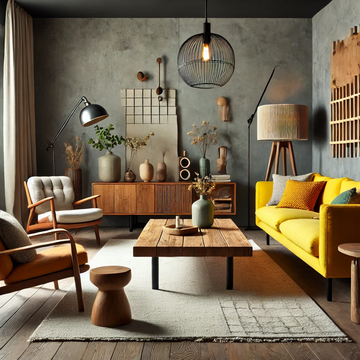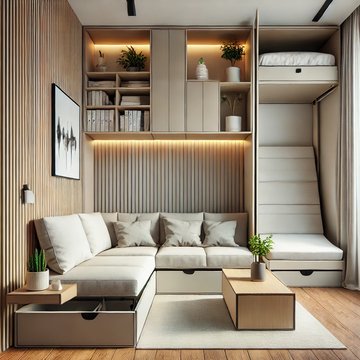The Joy of Photography
Let’s be honest—there’s something truly magical about capturing a moment through a lens. Whether it’s the excitement of framing a beautiful landscape or the satisfaction of snapping that perfect candid shot, photography offers a creative outlet like no other. And the best part? You don’t need to be a professional to take great photos. With a bit of guidance and practice, anyone can develop the skills to capture stunning images.
That’s why we’ve put together this guide. Whether you’re using a DSLR, a smartphone, or anything in between, these tips will help you get started on your photography journey. Ready to dive in?
Understanding Your Camera
Before you start snapping away, it’s important to get to know your camera. Whether you’re working with a high-end DSLR or just your phone, understanding the basics of how your camera works will help you take better photos.
Types of Cameras
- DSLR: Great for those who want full control over their settings and the highest image quality. DSLRs are versatile and can be used for almost any type of photography.
- Mirrorless: Similar to DSLRs but more compact. These cameras offer excellent image quality and are perfect for those who want a balance of portability and performance.
- Point-and-Shoot: Ideal for beginners who want something simple and easy to use. These cameras are compact, user-friendly, and great for everyday photography.
- Smartphone Cameras: Don’t underestimate your phone! Modern smartphones have powerful cameras that can produce stunning images, especially with the right techniques.
Key Camera Settings
- Aperture (f-stop): Controls the depth of field. A lower f-stop number (like f/2.8) gives a blurry background, which is great for portraits. A higher number (like f/11) keeps more of the scene in focus, ideal for landscapes.
- Shutter Speed: Determines how long your camera’s sensor is exposed to light. A fast shutter speed (1/1000) freezes action, while a slower speed (1/30) can create motion blur, adding a sense of movement.
- ISO: Controls your camera’s sensitivity to light. A lower ISO (100) is best for bright conditions, while a higher ISO (1600+) helps in low light but can introduce graininess.
- White Balance: Adjust the colour tone of your photos to match the lighting conditions. Use the appropriate white balance setting to keep your colours true to life.
Automatic vs. Manual Mode
While automatic mode is convenient, switching to manual mode gives you more creative control. Don’t be afraid to experiment with manual settings—it’s the best way to learn how your camera works and improve your photography skills.
Composition Techniques
Great photography isn’t just about the gear; it’s about how you frame your shot. Composition is key to creating visually appealing images.
Rule of Thirds
This is one of the most basic yet powerful composition techniques. Imagine your image is divided into nine equal parts by two horizontal and two vertical lines. Placing your subject along these lines or at their intersections can make your photos more balanced and interesting.
Leading Lines
Use natural lines in your environment—like roads, rivers, or fences—to guide the viewer’s eye through your photo. Leading lines can add depth and make your images more engaging.
Framing and Perspective
Don’t be afraid to experiment with different angles and perspectives. Try shooting from a low angle to make your subject appear larger or frame your subject using natural elements like trees or windows to add context and depth.
Negative Space
Leaving space around your subject, known as negative space, can give your photo a sense of simplicity and focus. It’s especially effective in minimalist compositions where the subject stands out against a clean background.
Lighting Basics
Lighting can make or break a photo. Understanding how to work with light, whether natural or artificial, is crucial for capturing great images.
Natural Light vs. Artificial Light
Natural light is often the most flattering and versatile. It changes throughout the day, offering different moods and tones. Artificial light, such as lamps or studio lighting, gives you more control over the scene. Each has its pros and cons, so it’s important to learn how to use both effectively.
Golden Hour Photography
The golden hour—shortly after sunrise or before sunset—is famous for its soft, warm light. It’s the perfect time to shoot for a dreamy, natural glow in your photos. If you’re looking to add some magic to your images, plan your shoots around this time.
Understanding Shadows and Highlights
Shadows add depth and drama to your photos, while highlights can draw attention to important details. Learn to control these elements by adjusting your camera’s exposure settings or positioning your subject relative to the light source.
Flash Photography
Using a flash can help illuminate your subject in low light, but it can also be tricky. To avoid harsh shadows or overexposed areas, try bouncing the flash off a wall or ceiling, or using a diffuser to soften the light.
Post-Processing Basics
Even the best photographers do some editing to enhance their images. Post-processing allows you to fine-tune your photos and bring your creative vision to life.
Introduction to Editing Software
There are plenty of editing tools out there, from professional software like Adobe Lightroom and Photoshop to free alternatives like GIMP. Each offers a range of features that can help you adjust colours, exposure, and more.
Basic Edits
- Cropping: Adjust your composition by removing unnecessary elements from the edges of your frame.
- Exposure Adjustments: Tweak the brightness of your photo to bring out details in the shadows or highlights.
- Colour Correction: Fix any colour imbalances to ensure your photo looks natural and true to life.
- Sharpening: Enhance the details in your image, making your subject stand out.
Presets and Filters
Presets and filters are great for quickly applying a specific look or style to your photos. While they can save time, it’s important to use them sparingly to avoid over-editing.
Practice Makes Perfect
Like any skill, photography improves with practice. The more you shoot, the better you’ll get.
Daily Photo Challenges
Set yourself a challenge to take a photo every day. It could be something simple, like capturing different textures or experimenting with light. These small challenges will help you develop your skills and find your photographic style.
Experimenting with Different Subjects
Don’t limit yourself to one type of photography. Try your hand at landscapes, portraits, macro photography, or even street photography. Each genre teaches you something new and can help you discover what you’re most passionate about.
Joining Photography Communities
There’s a lot to learn from others. Joining online photography communities or local clubs allows you to share your work, get feedback, and learn from more experienced photographers. It’s also a great way to stay motivated and inspired.
Common Mistakes and How to Avoid Them
Even the best photographers started as beginners. Here are some common pitfalls to watch out for.
Over-Reliance on Auto Mode
Auto mode can be handy, but it limits your creative control. Try switching to manual or semi-manual modes like aperture priority to start taking control of your settings.
Ignoring Composition Rules
While rules are made to be broken, understanding composition basics like the rule of thirds can dramatically improve your photos. Avoid cluttered or unbalanced images by paying attention to how you frame your shots.
Not Paying Attention to Lighting
Lighting is everything in photography. Before you press the shutter, take a moment to assess the lighting conditions. Make sure your subject is well-lit and that you’re not shooting into harsh light, which can cause unwanted shadows or glare.
Over-Editing
It’s easy to get carried away with editing, but less is often more. Aim for a natural look by making subtle adjustments. Over-editing can result in images that look unnatural or overly processed.
Building Confidence as a Photographer
As you practice, you’ll naturally start to develop your own style and build confidence in your abilities.
Embracing Imperfections
Not every shot will be perfect, and that’s okay. Mistakes are part of the learning process. The important thing is to keep shooting and learn from each experience.
Developing Your Own Style
As you gain more experience, you’ll start to notice patterns in what you like to shoot and how you like to edit. Don’t be afraid to experiment—your unique style is what will set your photography apart.
Creating a Portfolio
As you accumulate more photos, consider putting together a portfolio of your best work. Even as a beginner, having a collection of your favourite shots can be a great way to track your progress and share your achievements with others.
Ready to Start Capturing Stunning Photos?
So, there you have it—a guide to getting started with photography. Whether you’re using a DSLR, mirrorless camera, or just your smartphone, the tips and techniques in this guide will help you take your photography to the next level. Now, grab your camera and start shooting. Remember, the best way to improve is to practice, experiment, and most importantly, have fun!




